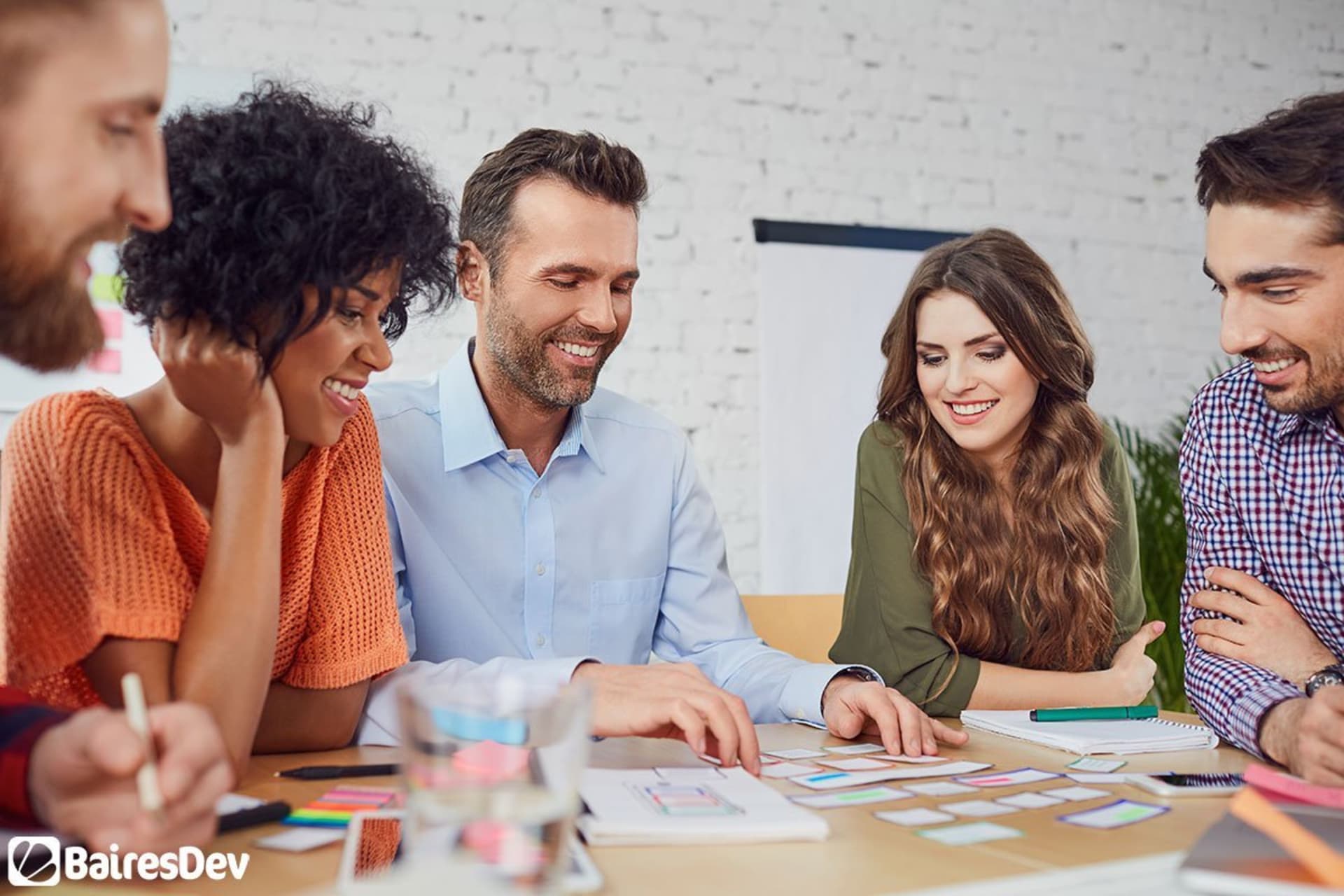The Quickest Route to Release
Startups can appear to be a little magical – they appear seemingly from thin air, and many disappear just as quickly. An enormous 29% of startups run out of money before they become established, and 74% of high growth startups fail because of premature scaling. Growing too big too quickly, without an appropriate plan or a monetizable product, is the cause of death for nearly three-quarters of the industry. For this reason, many startups are now utilizing what is known as a Minimum Viable Product (MVP) to secure against these high failure rates.
An MVP is a product designed with the bare minimum of features needed to solve a specific problem. It is usable and generates much-needed feedback for the product developers. It is basically the cheapest, quickest route possible to release a product, attract users, and gather data on where the product needs to head next. MVPs are often considered much like the first step in a business plan, and an appropriate MVP can ensure your company scales up sustainably.
MVP vs. Proof of Concept vs. Prototype
An MVP can sometimes seem a bit indistinguishable from other business plans and models, so it requires closer scrutiny to differentiate it from its brethren. Characterized by its purpose, an MVP’s intent is to release a ‘bare-bones’ product to solve a known, targeted problem, and prioritizes collecting the data generated from its use to inform how the product needs to develop and grow.
In contrast, a proof of concept (POC) is also widely used in startups. A POC is intended to test whether a concept or idea is in fact feasible and has the potential to support a product. This is more of a practicality test than an MVP and does not assume a problem exists that has an implementable solution. POCs have shorter life cycles and are a first step in determining whether further investment is warranted or not.
A prototype is a step in the product development process. As an incomplete version of a product or software, it is only used for demonstration, testing or discussion. Prototypes are never released.
This is where the MVP differs from other methodologies – the intent is to release it and to make use of this release in future development. It attracts real users, establishes your brand early on, reduces waste, and accelerates learning.
Within the MVP universe, there are multiple different types, each positioned to resolve a distinct problem.
Types of MVP
1. Wizard of Oz MVP
This type of MVP uses a little of the ‘Wizard of Oz’ magic to run. The solution appears to be one thing from the outside, but when seen from the inside it is actually another. An example of this is using human resources to complete functions that should be completed automatically. For example, having people answer questions manually rather than developing a technology to do so. From the user’s perspective, the result is the same, but developers are faking the methodology. Wizard of Oz MVPs are used to test a product hypothesis, which if confirmed can then be backed up by technological development.
2. Concierge MVP
Often confused with the above, a concierge MVP also manually services each user’s needs but does so openly. Users know they are dealing with a person. This is done to generate ideas about the problems the product could solve and to establish whether a need for the product exists.
3. Landing Page MVP
A landing page MVP is an incredibly simple concept. It is just a page where users land that describes your product, discusses its advantages, and has some follow-on action built in to allow interested users to participate further. This might be a click to join a mailing list, to learn more, to buy the product, or any number of other possibilities. Landing pages are quick and easy, and by setting up multiple, companies can compare which messaging or service better resonates with users. Similar to a landing page is a ‘smoke test’ – setting up an Adwords campaign with a landing page to record interest.
Picking the right type of MVP for your business requires some considerations about what exactly you need to know. Do you need to test a product’s hypothesis? Do you need to generate ideas on where your product should develop? There is a solution for every scenario, and choosing your MVP carefully is key to creating a sustainable, useful product.
10 Advantages of MVPs
The use of MVPs is growing in the startup industry and for good reasons. There are many advantages to using an MVP rather than a proof of concept, a wireframe, or a prototype. Here are ten advantages of using an MVP.
Advantage 1: Minimize development costs.
The development of software comes at a price. Every extra feature or attractive piece of design on your product costs precious resources. Many startups do not have the cash to burn. An MVP avoids the pitfalls of needlessly prettying up your initial product, as its focus is on basic functionality. After the MVP stage, once users have tested the product and developers understand their feedback, is the time to worry about eye-catching extras.
Advantage 2: Minimize risks.
The lower the initial input costs, the lower the risk if the product fails. By creating and releasing an MVP, a company can determine whether the product has a viable market and legs to grow before committing serious finances towards its development. If the product idea turns out to have no useful application, you have squandered fewer resources.
Advantage 3: Reduce rework.
MVP creation is rapid and developers avoid wasting energy on building features or extras that may not prove useful. By releasing a bare-bones style product, developers can determine where their focus needs to be before they start work on the extras. This avoids costly mistakes, pursuing unnecessary or unprofitable avenues or dead-ends, and significantly reduces frustration as well.
Advantage 4: Establish a customer base.
An MVP will be accessible to actual, real-life users, and this is invaluable in establishing a core customer base early in the startup’s tenure. Attracting potential customers is so important in creating a foothold in the market. A good MVP will generate its own word of mouth, helping to build the brand. An MVP will also generate income right away; maybe not a lot, but any revenue during the early stages of development is helpful and can help attract investors.
Advantage 5: Gather user feedback.
Another considerable advantage of having real-life users early in the development process is the ability to gather and analyze their usage of the product. Users will be able to provide opinions on the product and explain what works and what doesn’t. They’ll also describe added features they’d like to see and list anything they find difficult to use or confusing. Research such as this is fundamental to building a lasting, useful product that consumers will want to pay for, and gathering this intel as early as possible is indispensable.
Advantage 6: Test everything.
Every aspect of your product, from its concept to its execution, needs thorough and robust testing. An MVP is the most efficient way of doing this, with the least required input from you.
Advantage 7: Stay focused.
It is all too tempting when building a new product to get caught up in details or to follow interesting paths that appear during the development process. However, these are luxuries and do not necessarily further a new business’ ultimate aim. An MVP ensures that the core proposition is the primary focus by only requiring the main functionalities of the product. All of the extras, whether helpful or not, come later. This also helps to attract and keep customers who are using your product for a specific purpose.
Advantage 8: Attract investors.
Words are cheap, but a viable, usable product means business. Investors are drawn to companies with MVPs as it exhibits the potential of a product in a way that no mere pitch can. It also shows that serious thought has been put into the product and demonstrates the existence of real-world, measurable consumer interest.
Advantage 9: You don’t have to be a tech expert.
Not everyone with a brilliant idea for a product or app is a coding genius, but it is possible to build an MVP without a computer science degree. Whether you are a fledgling company struggling for capacity or a do-it-yourself entrepreneur, many options exist for developing your MVP. The most popular of these is outsourcing the process to a team of professionals. This is easier and more reliable than attempting to hire and manage freelancers to build your MVP, and significantly less time-consuming than learning to code yourself.
Advantage 10: Outsourcing an MVP.
Even for those companies that have a lot of in-house technical expertise, outsourcing an MVP’s development can be a smart, efficient way to approach the product process. Key personnel can remain focused on their particular specialty, while the management process is handled by experts who are not bound by the day-to-day of the rest of your business. This allows for a smoother MVP development process, where the core proposition remains the primary focus throughout.
All of these advantages help startups avoid many of the traps that capture their counterparts. Although businesses of all types use MVPs, startups find them particularly useful because of their small size, limited resources, and because they are a great way to steer around the major causes of business failure for startups.
How to Develop an MVP
Deciding to use an MVP is a step towards success, but not all MVPs are created equal. A well-thought-out MVP is necessary to generate usable data and to address the target audience’s needs properly. There are some key steps in developing an MVP, the first of which is to identify the problem you’re trying to solve. This central concept must drive the work. Defining the goal accurately will ensure focus does not dim or become distracted by attractive or clever features that may not prove useful. The solution-driven development process assumes a particular answer will work, whereas problem-driven development allows a broader range of solutions.
Next, the team should rank the importance of intended features to differentiate the vital from the rest. Those reflecting the core purpose of the product are included in the MVP, and the ‘nice to have’ can be saved for later in the process. After this, a sketch for the design of the MVP can be drawn up. It should be both user-friendly and simple. Ensure the MVP will provide usable feedback and is, therefore, a step in the process rather than an end in of itself.
If you learn nothing from your MVP, then it is ineffective. Simplicity is also relevant here, as many designers dally in the initial stages, trying to make everything look perfect. Perfection is not the goal of an MVP and the time lost waiting to launch it equates to time lost learning from its data.
Once finalized, the MVP goes live, and the learning process begins. User feedback will inform subsequent versions of the product and ultimately determine whether the product needs to pivot or will prevail.
Don’t Get Left Behind
Countless established tech companies have successfully used MVPs to grow their business. Everyone from Dropbox to Airbnb, and from FourSquare to Uber, have benefitted from carefully staged, user-driven growth provided by a well-executed MVP. Given the many possible failure points in the startup lifecycle, companies need to consider what reason they have not to use one. But remember: any MVP will not do. Your MVP must ask the right questions and provide the proper feedback to be useful, and the best way to ensure it does this is by consulting with experts.






